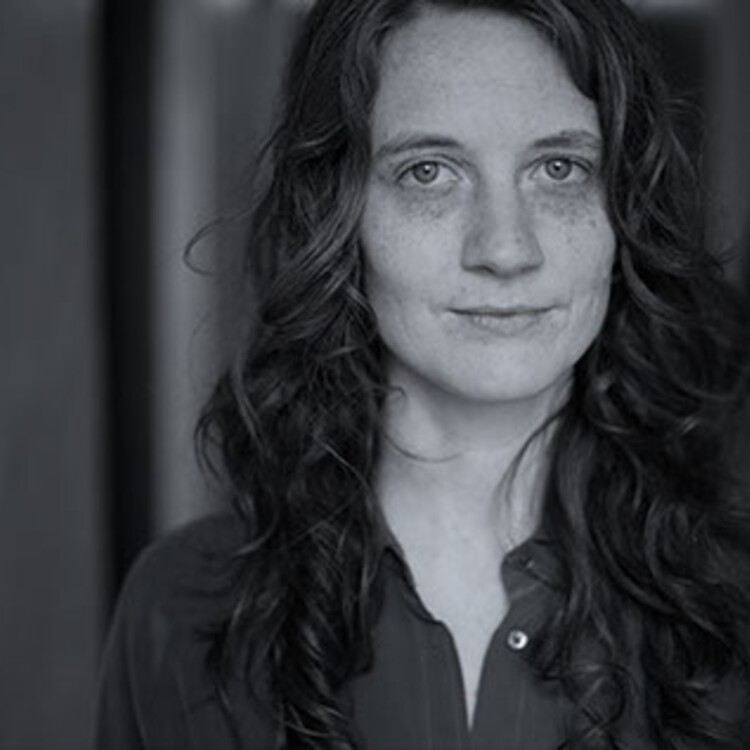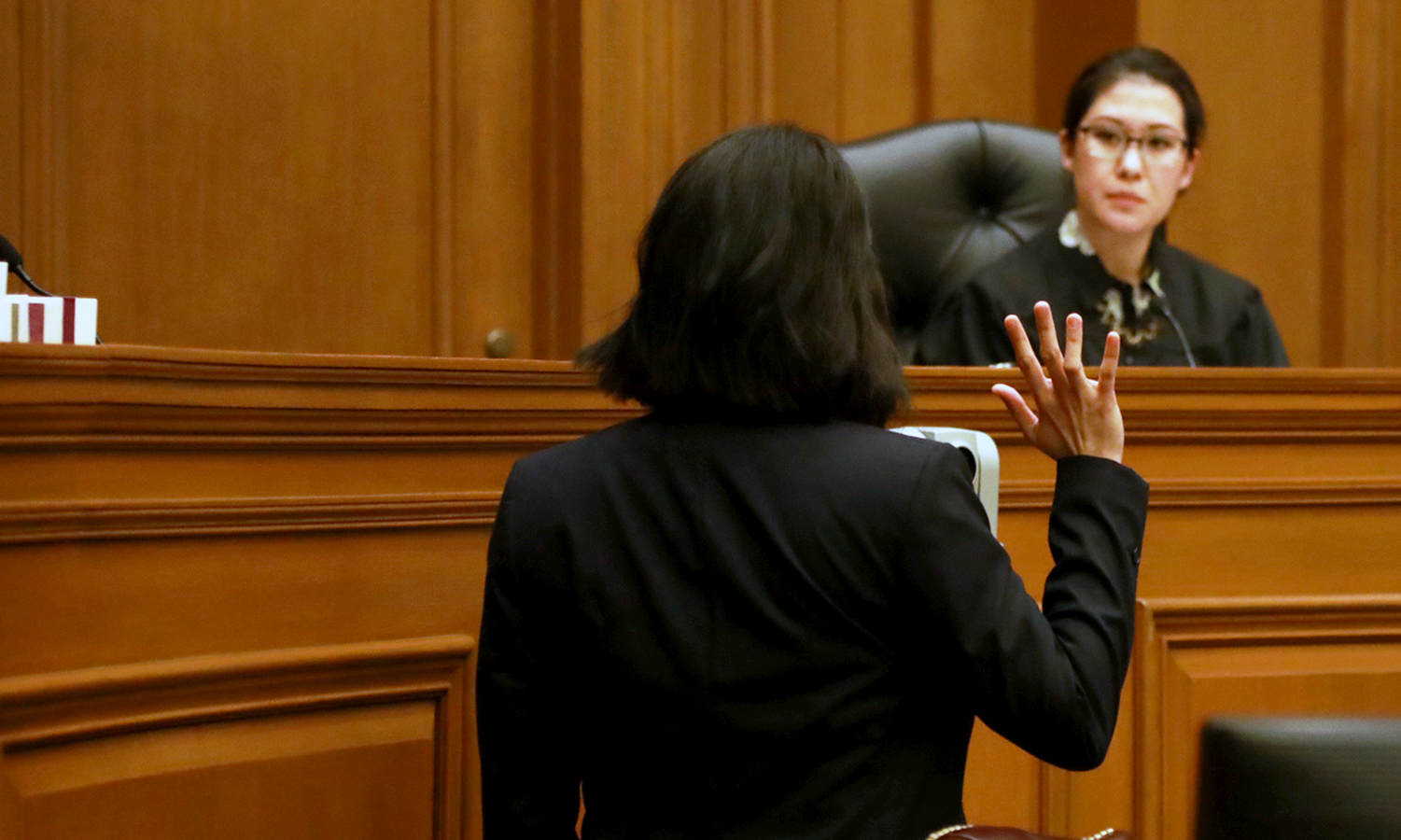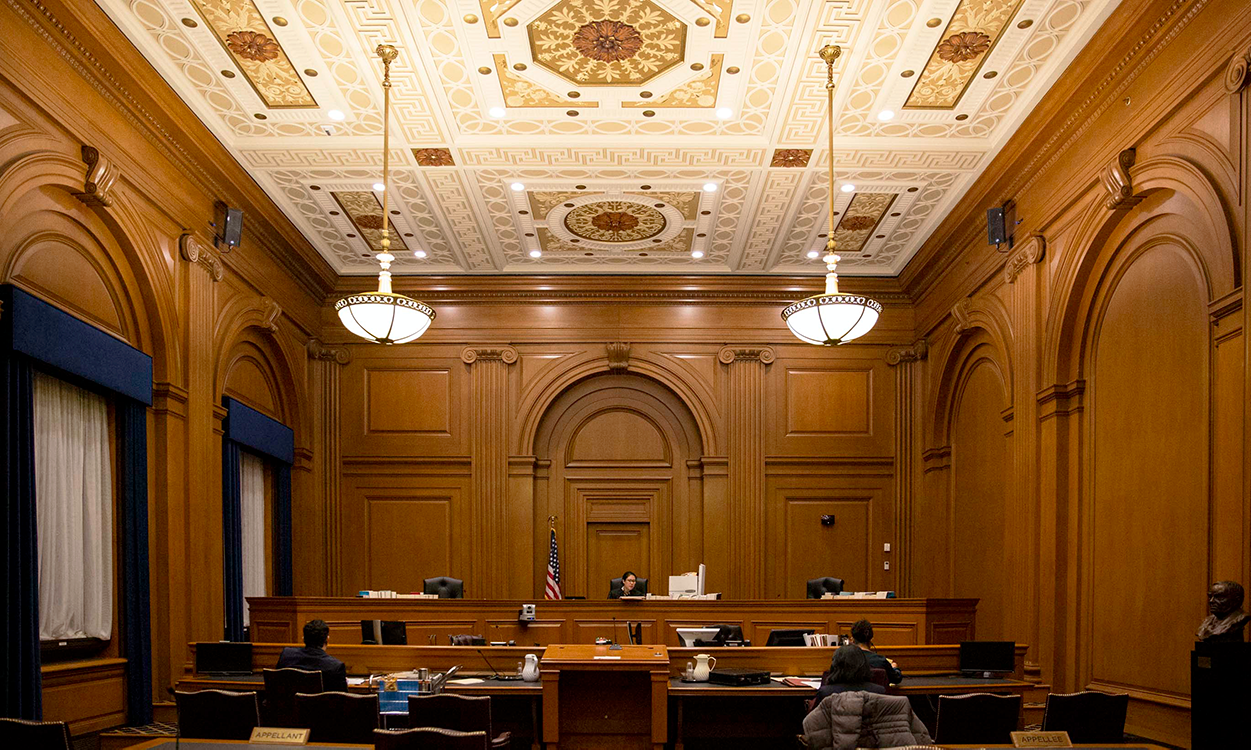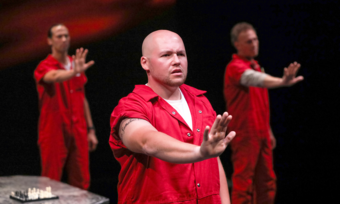The transcripts we used to create the script were from the case of Elizabeth Keathley, an immigrant from the Philippines who came to the United States on a K3 visa after she married her husband, who was a United States citizen. After inadvertently registering to vote at the DMV in Bloomington, Illinois, receiving a voter registration card in the mail, and voting, Elizabeth had to appear in court for deportation hearings. She lost the first case, but her appeal was heard in the Seventh Circuit, where the federal judges ruled in her favor.
The first performances were terrifying. We had no idea if the piece would capture people’s interest and hold their attention. But we put our faith in how this case encapsulated the age-old adage about the personal and the political. Through this story about a married couple in the early stages of building their family, who had made one honest mistake that put the wife in danger of being deported, the audience got to see a portrait of our nation’s legal system that exposed its catastrophic flaws and showed its singular, profound potential.
We were floored by audiences’ responses to the performances and started to understand the real power of the transcripts.
The transcripts gave the story a certain kind of objectivity, an unvarnished truthfulness about immigration—a polarizing issue that seems relentlessly distorted when we encounter it in the media, something that is all the more painful because it is central to our country’s identity. Ali Noorani, director of the National Immigration Forum, put it perfectly in his book, There Goes the Neighborhood: “Immigration gets at the core of who we are, and who we want to be, as a country.”
The Courtroom gave audiences an opportunity to get closer to the immigration legal system’s inner workings. Not to be told what to think, not to be told again how bad things are, but to get closer to something true and real. It was our realization about the power of unaltered transcripts that guided us when we started to think about what to make in response to our conversation with Elora Mukherjee.
The Flores Exhibits
We told Elora we would think deeply about how we could make a meaningful project, and she said she’d send us the testimonies. We took the conversation with her very seriously, feeling a sincere responsibility as artists to take up the need she put before us but having very little idea what we could create in response.
I printed out everything Elora sent me and sat down to read the sixty-nine testimonies. I thought: Again, here is that combination of procedural banality alongside life-and-death stakes. It unnerved me. The project needed to capture that specific disorienting, haunting aspect of the testimonies. It wasn’t hard to recognize the power of each individual story, and the patterns revealed when reading two, three, ten testimonies were a disturbing depiction of how the protections outlined in the Flores Settlement Agreement (FSA) were being violated.
Here’s a quick history of the FSA and why it’s important: In 1985, a fifteen-year-old Salvadoran girl named Jenny Flores was held in substandard conditions in immigration detention for a prolonged period of time. Based on her experience, a number of legal organizations filed a lawsuit against the government, which in 1997 resulted in the Flores Settlement Agreement. This set standards for the treatment of unaccompanied children (anyone under the age of eighteen) while they are in detention, including requiring the government to provide reasonable standards of care as well as safe and sanitary living conditions, and to release minors without any unnecessary delay, setting a cap of twenty days.
It is often impossible for people held in detention to socially distance, and there are many reports that there is no access to soap or sanitizer in numerous facilities.
The sixty-nine testimonies that Elora gave us were exhibits filed by the National Youth Law Center in a temporary restraining order requesting emergency relief for minors held in Customs and Border Patrol facilities; the firsthand accounts demonstrated violations of the Flores Settlement. Wrenching news reports about children being held in detention facilities for extended period of times—sometimes in cages—without access to basic hygiene supplies and adequate nutrition or sleep were based on these lawyers’ experiences and these testimonies.
What could we create to respond? We wanted people to experience the testimonies in full. We wanted people outside of New York City, where we’re based, to hear them. We wanted to involve actors but also all the incredible people we’d met during the process of creating The Courtroom who were not actors: lawyers, former judges, immigrant-rights advocates, immigrants who are not in the arts, and playwrights, designers, and other artists invested in this issue.
We decided not to make a piece of theatre. We decided to make a series of videos.
The testimonies would be read in full, without any textual or cinematic editing. We would ask readers from different sectors of society to participate with the hope that it would demonstrate—in a quiet, un-didactic way—a wide-ranging solidarity and investment in the issue. Each reader would sit at a simple wooden table with a glass of clean water, which is often described in the testimonies as being hard for immigrants to get in detention.














Comments
The article is just the start of the conversation—we want to know what you think about this subject, too! HowlRound is a space for knowledge-sharing, and we welcome spirited, thoughtful, and on-topic dialogue. Find our full comments policy here